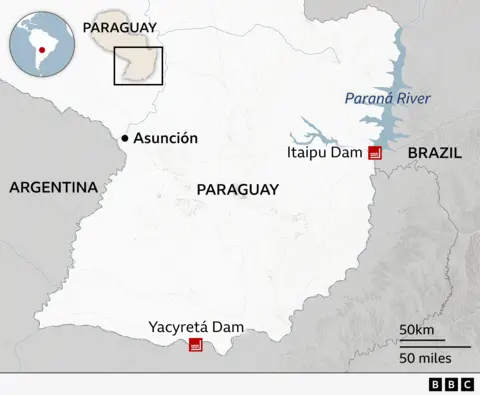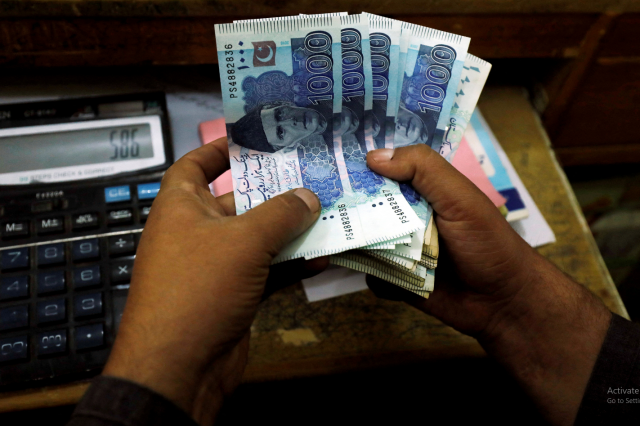Business
PSX continues upward momentum amid institutional buying, oil sector boost – SUCH TV

The Pakistan Stock Exchange (PSX) extended its bullish streak on Wednesday, fueled by strong institutional buying, partial disbursement of remittance incentives, and renewed investor confidence across key sectors—particularly oil and gas.
The benchmark KSE-100 Index surged to an intraday high of 144,209.03 points, gaining 1,171.87 points or 0.82%. Earlier in the day, it had touched a low of 143,409.59, still up by 372.43 points or 0.26% from the previous close of 143,037.16.
“A series of positive developments, including a technical breakout above the 140,000 level, has sparked fresh buying, especially in the oil sector following payments to OGDCL,” said Ahfaz Mustafa, CEO of Ismail Iqbal Securities.
Adding to the market’s momentum, the government approved Rs30 billion out of the Rs58 billion pending claims under the Telegraphic Transfer Charges Incentives Scheme (TTCIS), aimed at boosting remittance inflows.
The TTCIS, initiated in 1985, provides a zero-cost send model for eligible remittance transactions.
The reimbursement backlog, caused by a surge in home remittances exceeding allocated funds, will now be cleared in phases through technical supplementary grants.
Separately, the government plans to borrow Rs6.175 trillion from commercial banks via Treasury bills and Pakistan Investment Bonds (PIBs) between August and October, according to the auction calendar issued by the State Bank of Pakistan (SBP).
This includes Rs3.675 trillion in T-bills of varying maturities and Rs2.5 trillion in fixed and floating-rate PIBs.
The strategy, designed to pre-fund budgetary needs ahead of potential monetary easing, aligns with IMF commitments to avoid central bank borrowing.
The SBP held its benchmark interest rate at 11% last week, citing renewed inflation concerns.
Since June 2024, the policy rate has been reduced by 1,100 basis points from a high of 22%.
Meanwhile, Oil and Gas Development Company Ltd (OGDCL) confirmed it received the first Rs7.7 billion interest payment from Power Holding Private Ltd (PHPL) as part of a long-delayed Rs132.7 billion circular debt settlement.
The repayment stems from term finance certificates (TFCs) issued in 2013, with interest payments scheduled through mid-2026.
OGDCL had previously recognised the interest income over the TFCs’ lifecycle, with a carrying value of Rs170 billion as of March 2024.
The firm had booked a Rs23 billion loss due to discounted payment valuation, of which Rs10.6 billion had been reversed by March 2025.
On Tuesday, the Pakistan Stock Exchange (PSX)’s benchmark KSE-100 index closed the trading session at 143,037.16.
The index remained positive throughout the day, reaching an intraday high of 143,281.35 (+1,228.7) and a low of 142,235.71 (+183.07) points.
Business
Paraguay – the Silicon Valley of South America?

Jane ChambersBusiness reporter, Asunción, Paraguay
 Gabriela Cibils
Gabriela CibilsGabriela Cibils is on a mission – to help turn Paraguay into the Silicon Valley of South America.
When she was growing up in the landlocked country, nestled between Brazil and Argentina, she says the nation “wasn’t super tech focused”.
But it was different for Ms Cibils, as her parents worked in the technology sector. And she was inspired to study in the US, where she got a degree in computing and neuroscience from the University of California, Berkeley.
After graduating she spent eight years working in Silicon Valley, near San Francisco, with roles at various American start-ups.
But rather than staying permanently in the US, a few years ago she decided to return home to Paraguay. She’s now helping to lead efforts to build a large and successful tech sector that puts the country of seven million people on the world map – and attract some of the globe’s tech giants.
 AFP via Getty Images
AFP via Getty Images“I saw first hand the impact that technology can have on your life,” says Ms Cibils. “After being exposed to such a different world [in Silicon Valley], it’s my responsibility to bring that mindset back and combine it with the talent I see in Paraguay.”
She is now a partner at global technology and investment firm Cibersons, whose headquarters is in Paraguay’s capital Asunción.
While most countries would love to build a world-class tech sector, Paraguay has a distinct advantage in one regard – an abundance of cheap, green electricity.
This is thanks to 100% of its generation now coming from hydroelectric power.
This is centred on the giant Itaipu Dam on the Paraná River, which forms part of the border between Paraguay and Brazil. This huge hydroelectric power station, the largest in the world outside of China, supplies 90% of Paraguay’s electricity needs, and 10% of Brazil’s.
In fact, such is Paraguay’s surplus of electricity that its electricity prices are the lowest in South America.
And it is the world’s largest exporter of clean energy.
The Paraguayan government hopes that the country’s abundance of cheap, green electricity will attract global tech firms increasingly focused on the massive energy demands of AI computing.
“If you want to install any technology investment like AI data centres, keep in mind hydroelectric power is both renewable and steady,” says Paraguayan software development entrepreneur Sebastian Ortiz-Chamorro.
“Compared to other renewable energy sources like wind or solar, that have their ups and downs, it’s much more attractive for creating data centres or any other electro intensive activity that requires a steady electricity source.”
He adds that in addition to Itaipu, and Paraguay’s other large state-owned hydroelectric plant, the Yacyretá Dam, private companies can easily build their own smaller facilities.

On a visit to California last year Paraguay’s President Santiago Peña spoke with companies like Google and OpenAI to encourage them to invest in Paraguay. It remains to be seen if such industry giants open large operations in the country.
Minister of Technology and Communication Gustavo Villate is working closely with the president on the continuing efforts.
“We have the youngest population. We have a lot of renewable green energy. We have low taxes and economic stability,” he says proudly.
I’m taken on a tour with the minister of a planned new digital park near Asunción’s main airport. It’s currently green fields and some army barracks.
Mr Villate unfurls plans to show off the lakes, a childcare centre and other buildings which he says should be ready in under two years.
“The government are going to invest around $20m (£15m) for the first stage, but the idea is for private companies to invest the rest,” he says.
Even though the park isn’t ready yet, Mr Villate says the collaboration already happening between the public, private and university sectors is key to building an ecosystem to attract foreign investors.
The government thinks the country’s young population will be a key attraction, and able to provide a large tech workforce. The average age in Paraguay is 27.
 Vanessa Cañete
Vanessa CañeteBut more young people will need to be trained. The technology minister says the new digital park will also be home to The University of Technology, which is a joint venture between Taiwan and Paraguay.
Meanwhile, there are other initiatives to train young people in the country. “We are working really hard to create a mass of software engineers, programmers and everything you need to provide software services,” says Vanessa Cañete, president of trade group Paraguayan Chamber of the Software Industry.
Ms Cañete says she is also passionate about encouraging more women to study computer engineering. In 2017 she set up Girls Code, a non-profit association which aims to close the tech gender gap.
It organises programming and robotics workshops for teenagers and young women, with more than 1,000 receiving some sort of training to date.
Ms Cañete adds that software developers are also given English lessons for up to four years to improve their communication with overseas firms.
The people I met are brimming with positivity about what Paraguay has to offer the tech world, but they are also pragmatic.
Ms Cibils says there are still “growing pains” for foreign investors, with issues like bureaucracy, which can hold things up adapting local contracts to standardised international ones.
But she is adamant that “if you put innovation at its core and leverage all the benefits that the country has I think Paraguay can be a superpower”.
Business
Consumer tech expansion: Philips to widen India portfolio with global products; focus on male grooming, mother and child care – The Times of India

Philips India is set to broaden its footprint in the domestic market by introducing more global product lines and strengthening its offerings in male grooming and mother and child care, responding to rising consumer demand for premium personal care products.The company, which recently rolled out its rechargeable intimate skin-protect grooming product, OneBlade, aimed at Gen Z consumers, said the premium segment is seeing robust growth, highlighting a shift in Indian consumer preferences, PTI reported.“We will continue strengthening male grooming and mother and childcare with newer and newer innovations, and we continue to get our global categories, which are huge in other markets, into India,” said Smit Shukla, Head of Philips Personal Health India Subcontinent.He added that Philips has a large global portfolio in oral care, and the company is assessing strategies to drive consumer demand before introducing these products in India.According to Vidyut Kaul, Head of Personal Health, Philips Growth Region (JAPAC, ISC, META & LATAM), the non-manual grooming market in India has been expanding at a mid-to-high single-digit growth rate annually over the last five years.In the grooming segment, Philips India enjoys a 50-60 per cent market share, depending on the sales channel, Kaul said, underscoring the brand’s leadership position.He added that while Philips has long been a global innovation leader, the company had earlier avoided introducing premium innovations in India due to perceptions of it being a price-sensitive market. However, he said, “It is not price-sensitive but value-conscious, and we are seeing that premiumisation is fast catching up.”The company’s most premium shaver, launched in April this year, received a strong consumer response, with demand outpacing supply, he said. Philips has witnessed over 75 per cent growth in the premium segment, driven by this shift in consumer sentiment.The male grooming segment continues to be one of the top growth drivers for Philips in India, followed by the mother and child care segment, both of which have performed strongly over the past 2–3 years.“They continue to boost more and more growth and give access to the consumers. In addition, the personal care and personal grooming segments will further accelerate the growth journey there,” Kaul said.He also noted that Philips has enhanced localisation in its manufacturing operations under its ‘local-for-local’ strategy, which has helped shield the company from the impact of rising US tariffs.
Business
Women in banking: SBI aims for 30% female workforce by 2030; steps up inclusion and health initiatives – The Times of India

The State Bank of India (SBI) has set a target to raise the share of women in its workforce to 30 per cent by 2030 as part of a broader push to strengthen gender diversity and inclusivity across all levels of the organisation.SBI Deputy Managing Director (HR) and Chief Development Officer (CDO) Kishore Kumar Poludasu told PTI that women currently account for about 27 per cent of the bank’s total workforce, though the figure rises to nearly 33 per cent among frontline staff.“We will be working towards improving this percentage so that diversity gets further strengthened,” Poludasu said, adding that the bank is taking targeted measures to bridge the gap and meet its medium-term diversity goal.With a staff strength of over 2.4 lakh — among the highest for any organisation in the country — SBI has rolled out several initiatives aimed at creating a workplace where women can thrive professionally while maintaining work-life balance.Among the women-centric measures, the bank offers creche allowances for working mothers, a family connect programme, and dedicated training sessions to help women re-enter the workforce after maternity, sabbatical, or extended sick leave.Poludasu said SBI’s flagship initiative, Empower Her, is designed to identify, mentor, and groom women employees for leadership roles through structured leadership labs and coaching sessions. The programme aims to strengthen the pipeline of women leaders across the organisation.The bank has also introduced wellness initiatives tailored to women’s health needs, including breast and cervical cancer screenings, nutritional allowances for pregnant employees, and a cervical cancer vaccination drive.“These programmes are designed keeping in mind the women and girls who are employed in the bank,” Poludasu said, adding that SBI remains committed to fostering an inclusive, secure, and empowering workplace.Currently, the lender operates over 340 all-women branches across India, and the number is expected to increase in the coming years.SBI, one of the world’s top 50 banks by asset size, has also been recognised among India’s best employers by multiple organisations. Poludasu said the bank continues to drive innovation across processes, technology, and customer experience while ensuring that diversity and inclusion remain central to its transformation journey.
-

 Tech7 days ago
Tech7 days agoI’ve Tested Countless Mesh Systems. Here Are the Routers I Recommend
-

 Tech1 week ago
Tech1 week agoAmazon Prime Big Deal Days Is Next Week, but We Already Found 40 Early Deals
-

 Tech1 week ago
Tech1 week agoAmazon is overhauling its devices to take on Apple in the AI era
-

 Tech1 week ago
Tech1 week agoAll Hail the Surprisingly Versatile Packing Cube! These Are Our Favorites
-

 Tech1 week ago
Tech1 week agoAI in an ‘industrial bubble’ but will benefit society: Bezos
-

 Tech1 week ago
Tech1 week agoCombat Dry Indoor Winter Air With a New Humidifier
-

 Tech6 days ago
Tech6 days agoJony Ive Says He Wants His OpenAI Devices to ‘Make Us Happy’
-

 Business1 week ago
Business1 week agoInvestors are packing up; Pakistan must ask why | The Express Tribune













